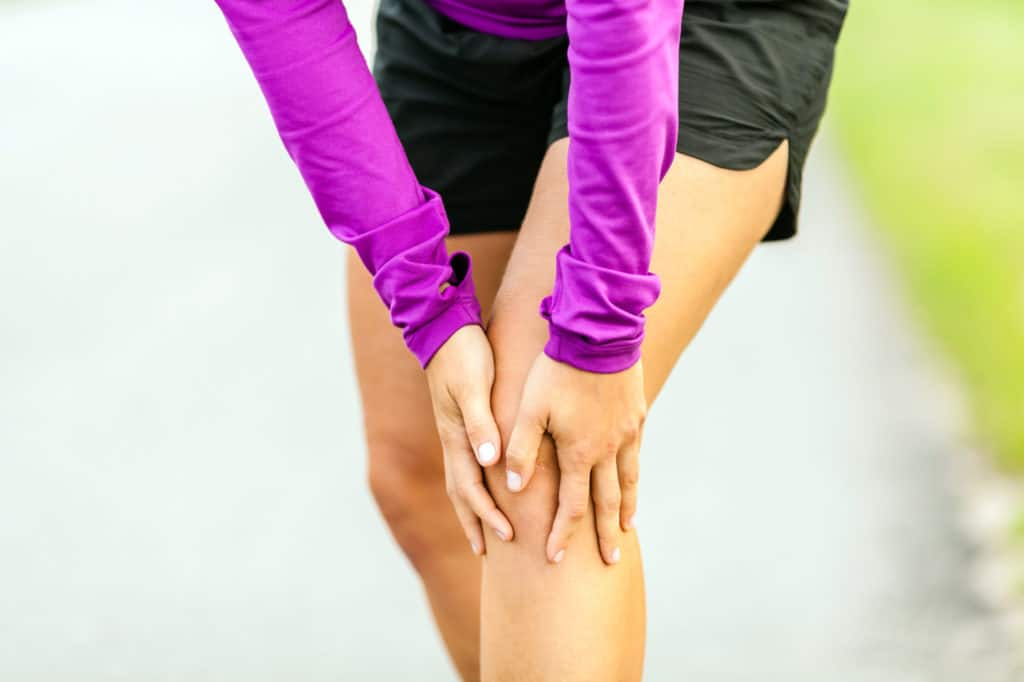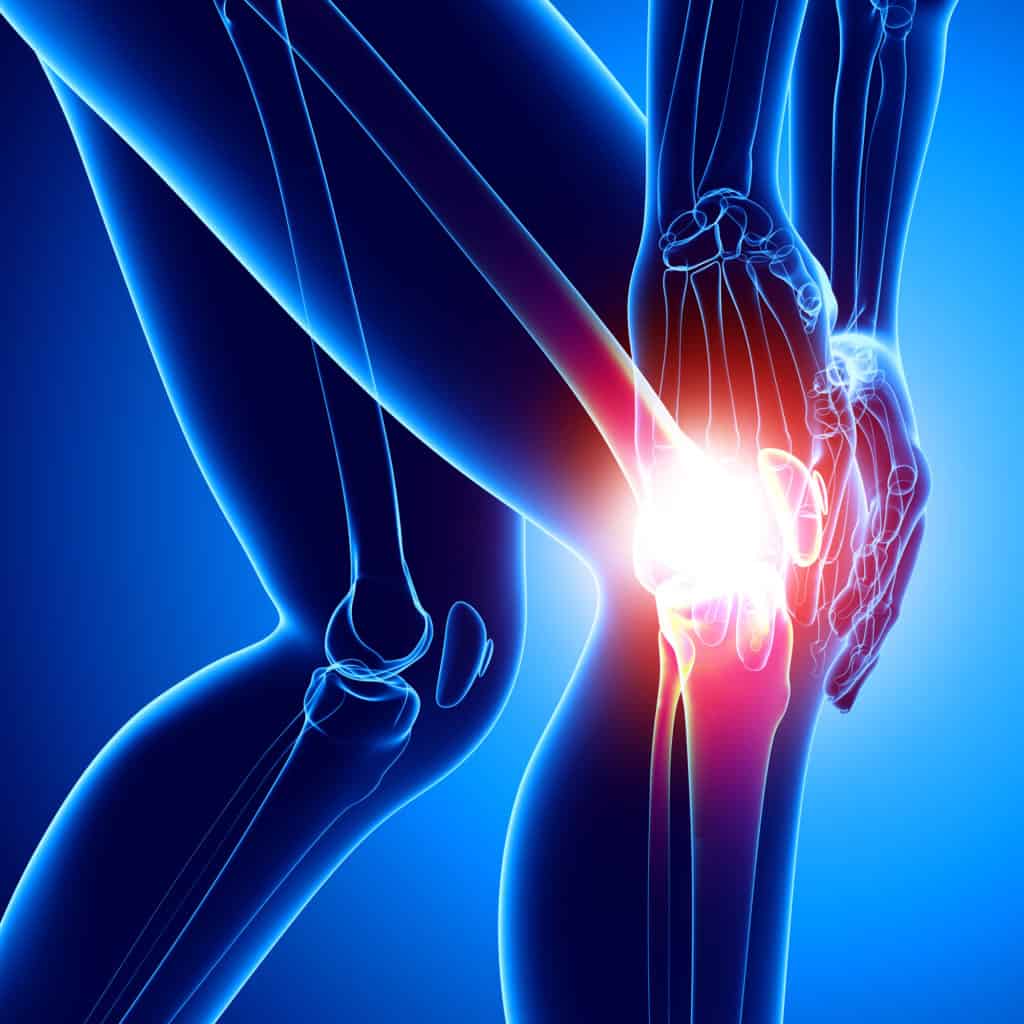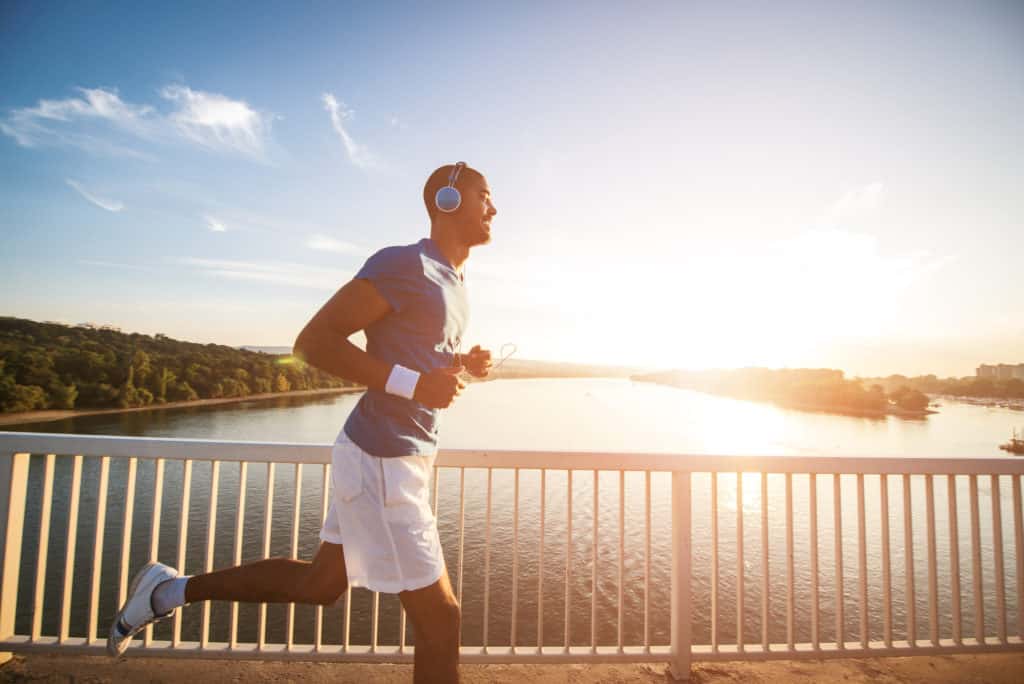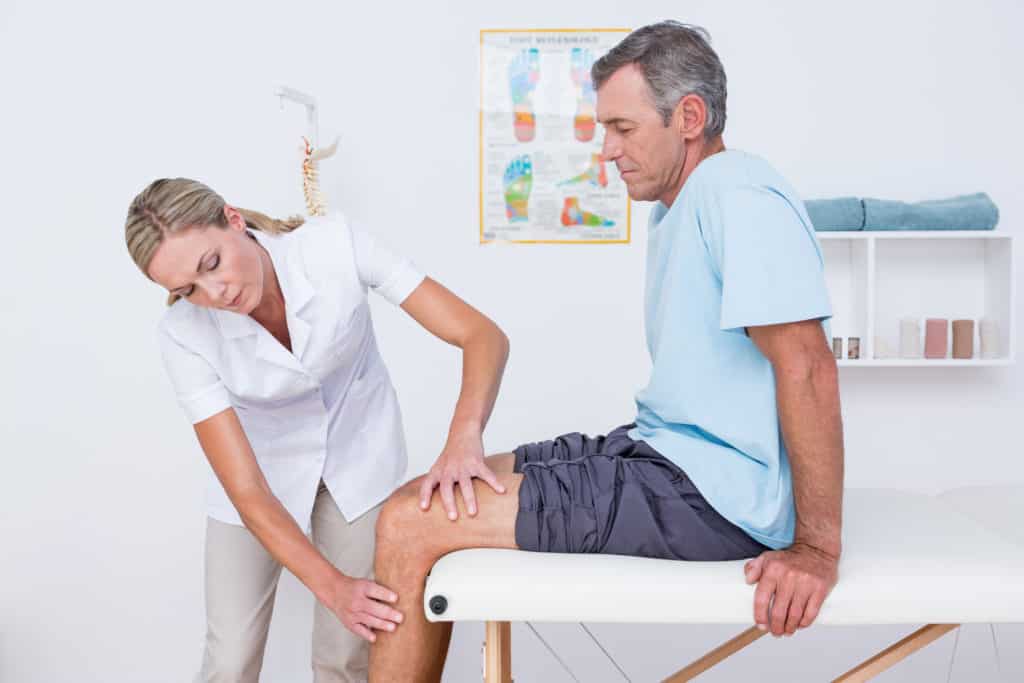
It’s essential to look after your knees when you lead an active lifestyle – and even more critical when you don’t.
Why? Because our knees are pivotal to us staying fit, healthy, and mobile. Quite literally, they’re central to everything we do – from walking, running, jumping, twisting, turning, starting, and stopping. But for this reason, knees are super-prone to injuries, osteoarthritis, and other painful conditions.
Do you suffer from pain in your knees?
Where does it hurt?
Letting us know where you feel the pain helps us diagnose the cause. Don’t hesitate to get in touch today and start your journey towards recovery.
More Blogs From Gage Physiotherapy
Can Plantar Fasciitis Cause Ankle Pain?
How To Gear Up And Avoid Foot Pain
What Causes Knee Pain?

The most common knee problems we see are injuries like runner’s knee, ligament tears and sprains, tendonitis, and torn meniscuses. If you don’t treat these injuries promptly and effectively, they continually flare up and eventually cause chronic knee pain and sometimes even ligament repair surgery, reconstruction, or joint replacement.
What are the other causes of knee pain?
-
- Osgood-Schlatter disease: This condition generally affects the young when the bones and knees are in their developmental stage. It leads to a painful spot beneath the knee at a juncture where a kneecap tendon links to the shin bone. Specifically, overexertion in this area, known as “tibial tubercle,” makes the spot swell and become sensitive. It can flare up regularly, but it’s more common among teenagers and young adults.
- Bursitis: We all have a “sac” with a small quantity of fluid beneath the skin above the knee joint known as the bursa. It prevents friction when we use our knee joints. However, these tiny sacs of fluid can become sore due to continuous kneeling, bending, a fall and overuse, which causes inflammation and pain. Medically, we refer to this condition as “prepatellar bursitis.”
- Dislocated kneecap: Ouch. It even sounds painful, right? When kneecap dislocation occurs often because of a sporting injury or other accident, it shifts out of position, causing inflammation and sharp pain. Doctors call this condition “patellar dislocation.”
- Patellar tendinitis: When the tendon that links the kneecap and the shinbone is inflamed, it causes a condition called “patellar tendinitis .”A tendon is a band of tissue that connects bones and muscles. If they are overexerted, it leads to inflammation and soreness. With the knee, the most common cause of tendonitis is jumping, which we sometimes call “jumper’s knee.”
- Osteoarthritis: The cause of this painful condition is typically wearing and tearing over a long period. Sadly, without regular physiotherapy, strength training and good mobility practice, most adults over 50 tend to suffer from it to some extent. Osteoarthritis of the knee, specifically, leads to pain and swelling in the knee joints. In addition, suffers may find that their mobility is significantly restricted by the condition, especially first thing in the morning.

- Patellofemoral pain syndrome is primarily due to alignment issues, tightening or imbalance of the muscles, etc. If you suffer from this condition, you may feel knee pain along with your knees suddenly “buckling” under your weight. Again, we see this condition more common in women than men.
- IT (iliotibial) band syndrome: The iliotibial (IT) band is a strong band of tissue that travels from the hip downwards to the outer section of the knee. Occasionally, due to overexertion, this band can become inflamed. If you suffer from this condition, you most likely feel the pain arising from the outer edge of your knee. We’re most likely to see this condition in runners and other athletes more than in the general population.
- Meniscal tear: If you injure your knee, it may cause a tear in the cartilage, with the edges suffering further restriction inside the joint. If you have torn your meniscus, the telltale signs and symptoms are pain, swelling and a pinching sensation in the knee joint while moving.
How To Avoid Or Reduce Knee Pain

Knee pain is not something you have to put up with – even if that’s what well-meaning friends and relatives have told you. There are many things we can do to treat and prevent knee pain.
If you have pain now and want to reduce it or want to prevent knee pain in the future, here’s what to do:
- Avoid being sedentary: Being sedentary and inactive for extended periods is one of the leading causes of all types of joint and muscle pain. Why? Because inactivity causes your muscles to become weak, which can cause joint pain to set in or for existing joint pain to get aggravated. To avoid knee pain, consider making daily movement and activity a priority. Start with a knee-friendly routine to help you increase your activity levels. For example, even a gentle daily stroll can strengthen the muscles around your knee. But better still, consult a physiotherapist who can help you select the right kind of exercises and an intensity level to suit your circumstances.
- Minimize risky movement: if you are over 50 and starting to feel the effects of wear and tear or osteoarthritis, any fall can damage the knee joints and lead to long-term issues. Without sacrificing enjoyment and desire for adventure too much, try to limit movements and activities that might result in a fall if your knees are already unstable or painful. You could cause further damage to your knee and exacerbate the existing issue. Also:
-
- Make sure your home has ample lighting.
- Always grip the handrails when climbing the stairs
- Use a stool or sturdy ladder to reach things from a shelf (or, better still, have someone get it for you)
- Use heat therapy: If you injure your knee, you should use an ice pack during the first 72 hours to relieve the swelling and pain. If you don’t own a standard ice pack, ice cubes inside a plastic bag will also work well. Apply the pack to your knee for around 20 minutes, 3-4 times per day. Remember to put the ice pack or bag of ice inside a towel before applying it to your skin to prevent skin damage and irritation. After the initial 72 hours, swap the ice packs for warm baths and heating pads to soothe the pain, prevent stiffness and allow your muscles to relax.
- Start exercising: Leading an active lifestyle is not only essential for our physical and mental well-being. But it also strengthens the muscles and joints of the body, which can prevent and treat knee pain. If you have knee problems, avoid high-impact exercises and activities that put extra pressure on the knees, like running and jumping. Exercising is an excellent way to remain active. Doing high-impact activities like running and jumping can exacerbate pain in the knees. Any exercise that jars the joints increases stress on the knees should be avoided. Instead, stick to elliptical machines, walking, biking, and swimming. Gentle Yoga, Pilates, and weight training are excellent choices to strengthen muscles and joints and improve flexibility, mobility, and balance.

- Consult a Physiotherapist: If you have any issue with your knees, it’s hugely beneficial to consult a physiotherapist for advice. We can diagnose what’s going on with your knees and determine what is causing the pain. We help you avoid dangerous surgeries and joint replacement and take steps to prevent osteoarthritis in the future. We can also tailor-make an exercise routine for you that will enable you to get active again while also increasing your muscle strength and mobility. Some of the methods we may recommend to relieve your knee pain may also include:
- Therapeutic Exercise/movements: A customized set of movements or exercises that are custom-made to relieve the specific cause of your knee pain.
- Using knee supports or braces: if you have weakness in your knee joints, we may suggest using elasticated knee supports or a knee brace, especially during exercise. But these are the last resort and not suitable for everyone. Always get professional advice before using one of these devices because they may exacerbate your problems if they’re not ideal for your specific set of circumstances.
- Taping: In certain circumstances, we may recommend applying tape over your knee(s) to keep it in correct alignment and prevent pain. But again, do not try this at home – seek professional help.
Book A Free Consultation With An Experienced Knee Professional

If you’ve got knee pain or joint stiffness – it’s tempting to ignore it and expect it to go away on its own. Instead, you tell yourself you just wore the wrong shoes or “did too much .”But, in our experience, when knee pain starts, it’s often just the start. If left untreated, things worsen until your only option is surgery or joint replacement.
Would you like to talk to a physiotherapist about your knee problems?
We offer all new patients a free initial consultation to chat about their knee pain issues and get recommendations on the best way to reduce their pain. You can choose a telephone consultation or a Discovery Session at the Gage Physical Therapy clinic. Which would you prefer? Book now.

